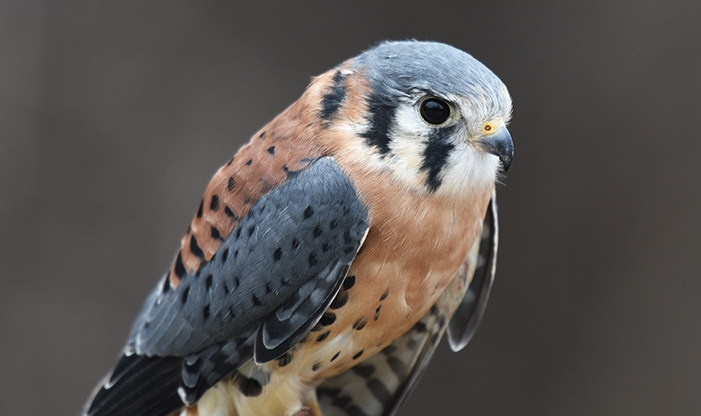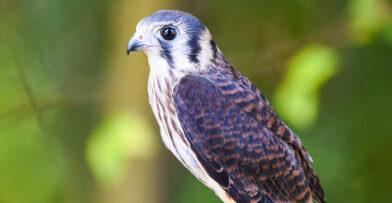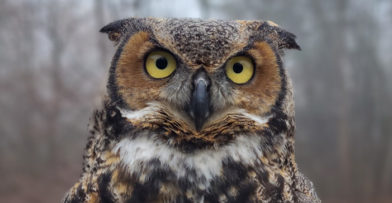Schlitz Audubon is excited to announce the addition of Saxon, a male American Kestrel, to our Raptor Program.
Saxon hatched in 2023. He and his siblings fell out of their cavity nest as nestlings and could not be re-nested. They were taken to Hoots to Howls Wildlife Rehabilitation in Indiana for care. The wildlife rehabilitators at Hoots to Howls spent months caring for the young nestlings to get them ready for release back into the wild. As they were learning how to fly, staff noticed that Saxon was not flying like his siblings. They consulted with their veterinary team and Saxon was deemed non-releasable due to a permanent wing injury that impedes his ability to fly. Saxon’s siblings were released back into the wild while the wonderful team at Hoots to Howls searched for a permanent home for this young male.
Our Raptor Program has been looking for an American Kestrel who would be the perfect fit as an ambassador for their species. We are grateful to Hoots to Howls for reaching out to us and placing young Saxon at Schlitz Audubon as his forever home.
About the Species
As our nation’s most common and widespread falcon, American Kestrels play a vital role across our country’s different ecosystems. Though they are the smallest of the North American falcons, they are fierce predators eating prey items ranging from insects to rodents to other small birds. Throughout Wisconsin, American Kestrels can be found near open habitats, like grasslands, parks, and fields. Oftentimes these small falcons can be seen perching near roadways, on telephone lines, fenceposts, or streetlights, looking for prey below.
Species Identification
American Kestrels are often overlooked or misidentified, as they are roughly the same size and shape as Mourning Doves. One silhouette identifier is that the head shape of an American Kestrel is relatively large and wide compared to other birds of the same size.
Unique for raptor species, this colorful falcon has sexually dimorphic plumage – or different feather colors between males and females. Male American Kestrels are more vibrant, with slate blue feathers on their wings, while female American Kestrels are rufous colored across their back and onto their wings. If you cannot identify an American Kestrel by their body shape or plumage, these small falcons can also be identified by their behaviors. They often bob their heads or tails while perched and can be seen hovering in flight when they have spotted prey.
Though not a species of concern, American Kestrel numbers have been declining drastically across North America due, in part, to habitat degradation. With the Raptor Program, Saxon will teach about American Kestrel conservation and the amazing adaptations these small falcons use to survive!


